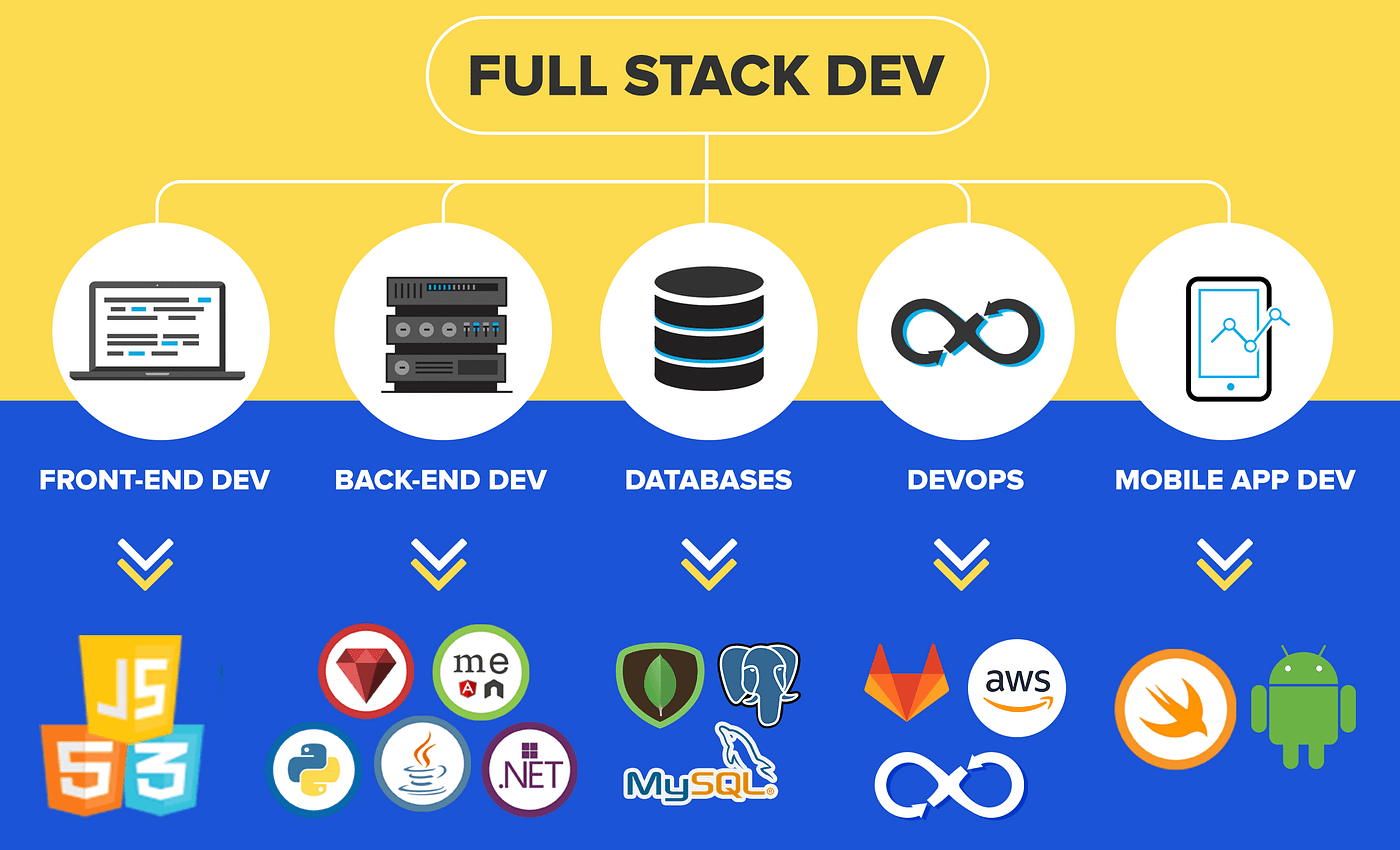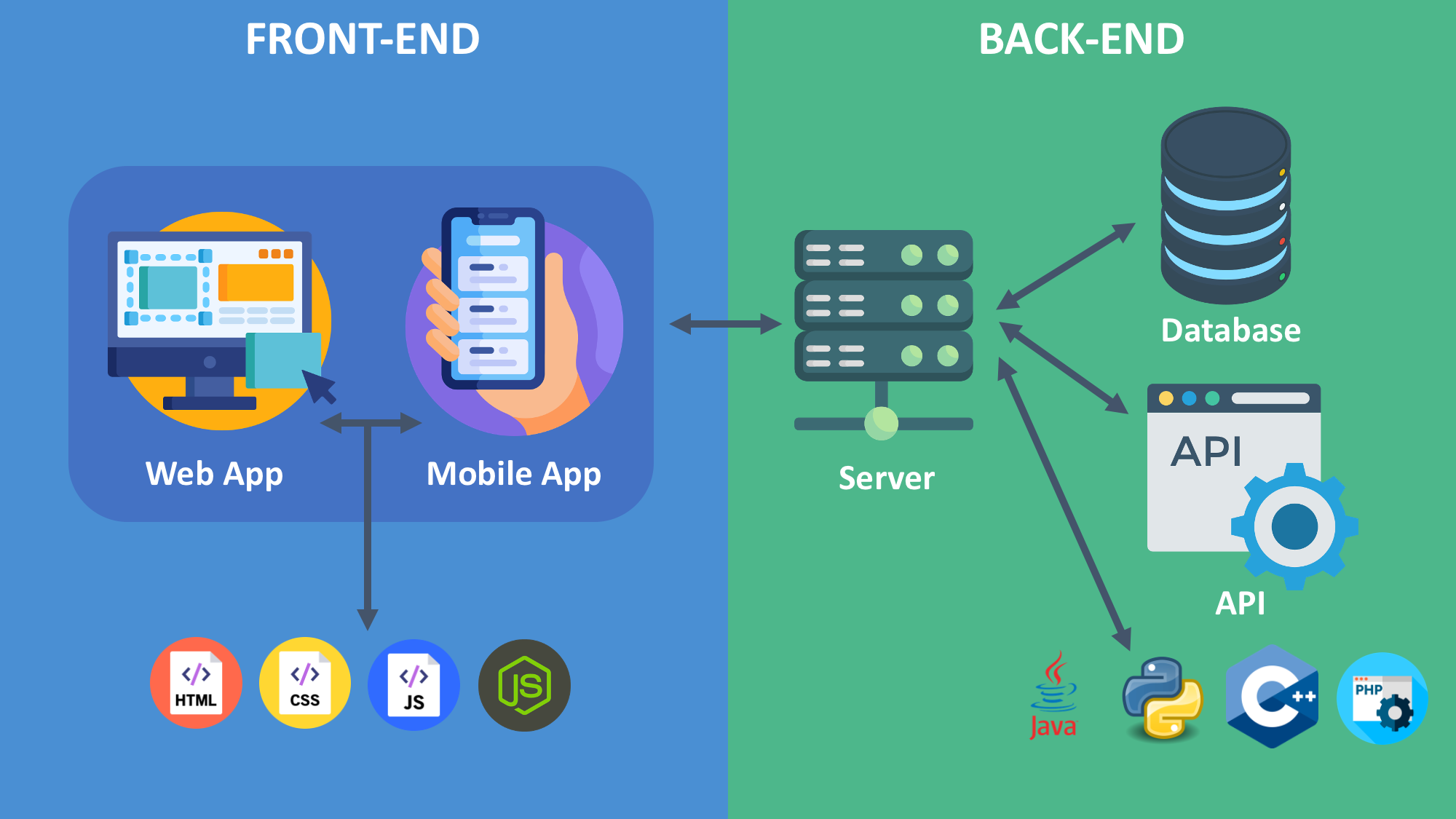Full-stack
Introduction to Full Stack Development
Full stack development is a discipline that encompasses both the front-end and back-end development of a web application. In this chapter, we will explore what it means to be a full stack developer, the roles they play in the development process, and how each technology and tool integrates to build a complete web application.

What is a Full Stack Developer?
A full stack developer is someone with skills in both the part visible to the user (front-end) and the server logic and processing (back-end). These professionals have comprehensive knowledge that allows them to work in multiple areas of software development, adapting to different tasks throughout the lifecycle of an application.
Main Components of a Full Stack Application
To better understand full stack development, let's look at the main components of such an application:
- Front-End: This is the part of the application that users see and interact with. It includes HTML for structure, CSS for styling, and JavaScript for interactivity.
- Back-End: This is where the application logic, data handling, and interaction with the database are managed.
- Database: Stores the application's information and data, allowing for data persistence.
- DevOps: Involves tools and practices for efficiently deploying, scaling, and monitoring applications.
Full Stack Application Development Cycle
The development cycle of a full stack application generally follows these stages:
- Planning and Design: Define the requirements and design the user interface.
- Front-End Development: Create the interface using HTML, CSS, and JavaScript.
- Back-End Development: Implement business logic, authentication, and data management.
- Database Integration: Connect to a database to store and retrieve data.
- Testing and Deployment: Perform testing and deploy the application to a production environment.
A Simple Example of Front-End and Back-End Connection
To illustrate how the front-end communicates with the back-end, let's look at a simple example of an HTML form that sends data to a server.
html
To handle the request on the server side, in the back-end, you might use Node.js code similar to this:
javascript
The Importance of Full Stack Skills

Full stack developers are valued for their ability to understand the project as a whole and work at multiple levels of the application. This versatility is especially useful in small teams and startups, where a developer may be responsible for various aspects of development.
Skills in full stack development also allow for smoother collaboration with other specialists, as full stack developers can understand and participate in technical discussions at any part of the development cycle.
Conclusion
Full stack development is a broad and comprehensive field that enables the creation of functional applications from start to finish. Through this chapter, we hope to have conveyed the importance of this approach and how each component contributes to building a complete web application.
In the next chapter, we will explore Front-End Development with a focus on HTML, CSS, JavaScript, and the use of libraries such as React.
Support Chuck’s Academy!
Enjoying this course? I put a lot of effort into making programming education free and accessible. If you found this helpful, consider buying me a coffee to support future lessons. Every contribution helps keep this academy running! ☕🚀

Chat with Chuck














